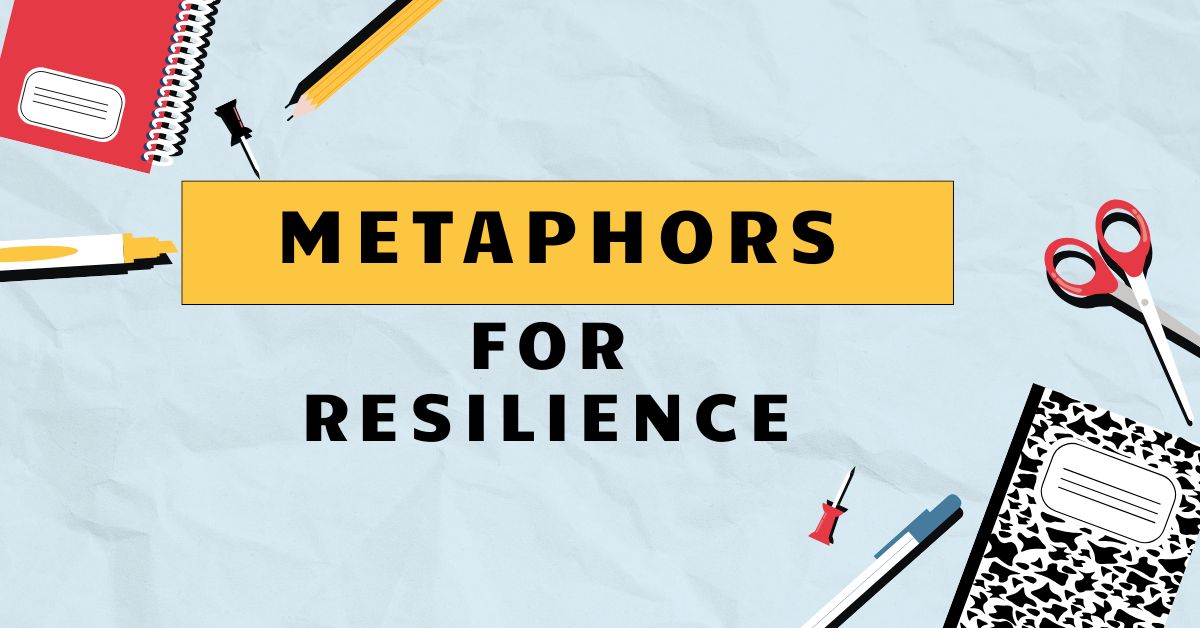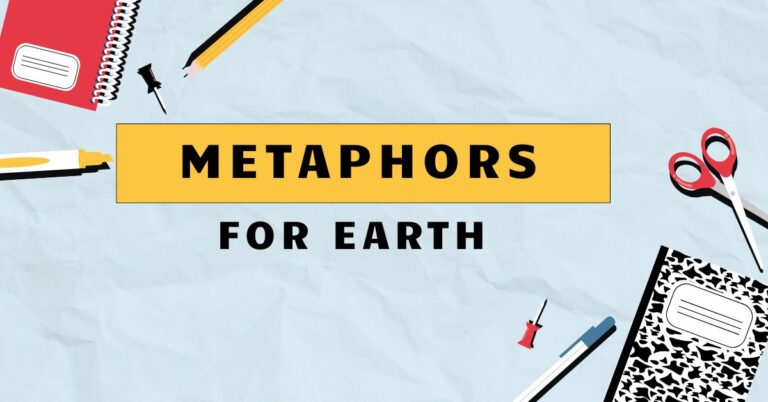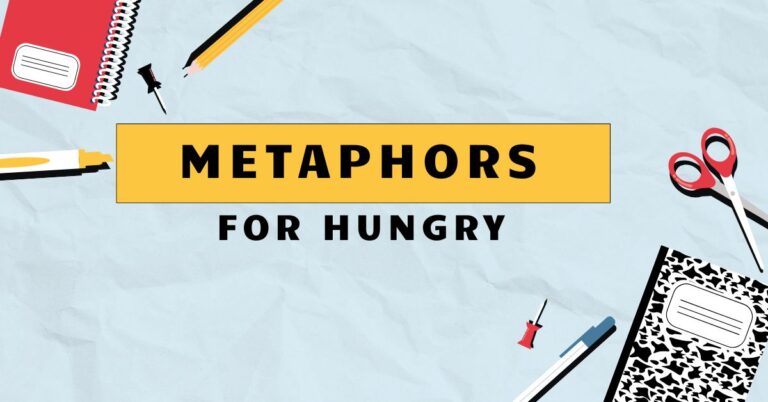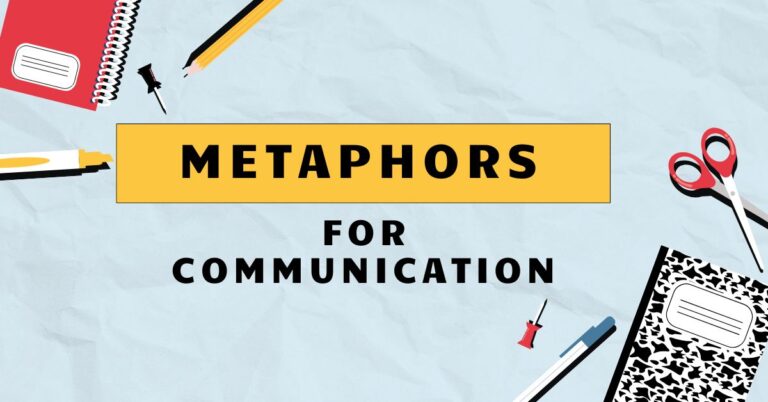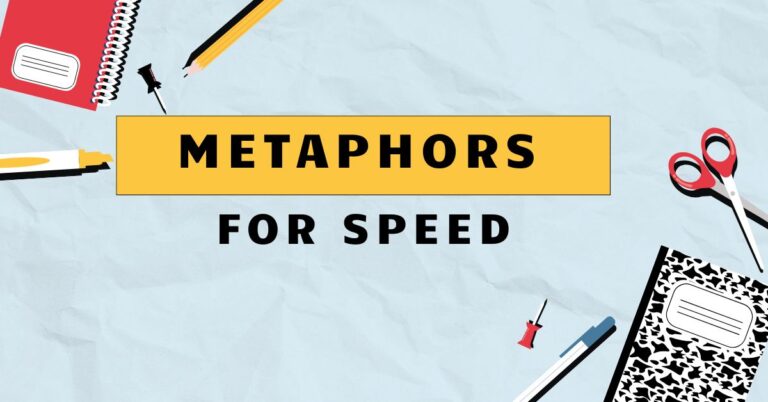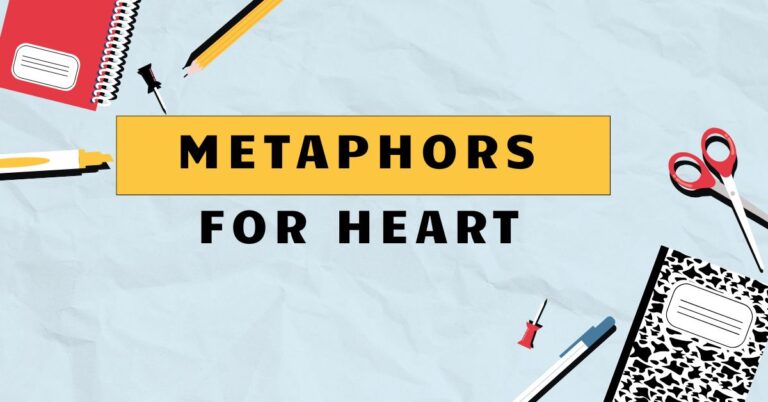49 Metaphors for Resilience: Building Strength Through Language
Resilience, the ability to bounce back from adversity, is a powerful concept. Understanding how metaphors are used to describe resilience not only enriches our understanding of the concept itself but also enhances our linguistic skills.
This article explores the various metaphors employed to represent resilience, providing a comprehensive guide for learners of all levels. By delving into these linguistic devices, we can better articulate and appreciate the strength and adaptability inherent in the human spirit.
This exploration is beneficial for students, writers, and anyone interested in the nuances of the English language and the power of figurative language.
Table of Contents
- Introduction
- Definition of Metaphor and Resilience
- Structural Breakdown of Resilience Metaphors
- Types of Metaphors for Resilience
- Examples of Resilience Metaphors
- Usage Rules for Resilience Metaphors
- Common Mistakes with Resilience Metaphors
- Practice Exercises
- Advanced Topics in Resilience Metaphors
- FAQ
- Conclusion
Definition of Metaphor and Resilience
Ametaphoris a figure of speech that directly compares two unrelated things, asserting that oneisthe other. It’s a powerful tool for conveying complex ideas in a vivid and relatable way, adding depth and emotional resonance to language.
Unlike similes, which use “like” or “as” to make comparisons, metaphors create a direct association.
Resilience, in the context of this article, refers to the ability to recover quickly from difficulties; toughness. It encompasses the mental, emotional, and behavioral capacity to face and overcome challenges, setbacks, and adversity.
Resilience is not about avoiding stress, but about effectively navigating through it and emerging stronger.
Structural Breakdown of Resilience Metaphors
Resilience metaphors often work by mapping the characteristics of a physical object or process onto the abstract concept of resilience. This involves identifying shared attributes between the source domain (the physical object or process) and the target domain (resilience).
For instance, a “tree bending in the wind” uses the tree’s flexibility as a metaphor for a person’s ability to adapt to difficult situations. Thesource domainis the tree, and thetarget domainis resilience.
The shared attribute is the ability to withstand pressure without breaking.
The effectiveness of a resilience metaphor depends on the clarity and relevance of the shared attributes. A strong metaphor will create a vivid and easily understood connection between the source and target domains, enhancing the reader’s understanding of resilience.
A weaker metaphor may be confusing or feel forced, diminishing its impact.
Types of Metaphors for Resilience
Strength-Based Metaphors
Strength-based metaphors emphasize the inherent power and fortitude associated with resilience. These metaphors often draw on images of strong materials, such as steel, rock, or oak trees, to convey the idea of unwavering resolve and the ability to withstand immense pressure.
These metaphors are effective in highlighting the inner resources that enable individuals to overcome adversity.
Growth-Based Metaphors
Growth-based metaphors focus on the capacity to learn and evolve from challenging experiences. These metaphors frequently use imagery of plants, seeds, and gardens to represent the idea that adversity can foster personal development and lead to new opportunities.
They underscore the transformative potential of difficult situations.
Transformation-Based Metaphors
Transformation-based metaphors highlight the process of change and adaptation that occurs as a result of overcoming adversity. These metaphors often employ images of metamorphosis, such as a caterpillar transforming into a butterfly, or the refining process of metal being forged in fire.
They emphasize the idea that challenges can lead to profound personal growth and a new sense of self.
Elasticity-Based Metaphors
Elasticity-based metaphors underscore the ability to bounce back from setbacks and return to a previous state of equilibrium. These metaphors frequently use imagery of rubber bands, springs, or other flexible materials that can stretch and then return to their original form.
They emphasize the importance of adaptability and the capacity to recover from stress.
Navigational Metaphors
Navigational metaphors portray resilience as the ability to steer through turbulent waters or navigate a difficult path. These metaphors often use imagery of ships, compasses, and maps to represent the idea that resilience involves setting a course, overcoming obstacles, and reaching a desired destination.
They highlight the importance of planning, problem-solving, and perseverance in the face of adversity.
Examples of Resilience Metaphors
The following tables provide comprehensive examples of resilience metaphors, categorized by type. Each table includes a variety of examples to illustrate the different ways in which these metaphors can be used.
Table 1: Strength-Based Metaphors for Resilience
This table showcases how strength-based metaphors are employed to depict resilience. The examples highlight the use of durable and unyielding materials to symbolize the power to withstand adversity.
| Metaphor | Explanation |
|---|---|
| She is a steel magnolia. | Implies a combination of toughness and beauty, suggesting she is strong but also graceful. |
| His spirit is as solid as a rock. | Indicates unwavering resolve and an ability to withstand immense pressure. |
| She’s built like an oak tree, weathering every storm. | Suggests resilience, longevity, and the ability to withstand harsh conditions. |
| He has a heart of iron. | Implies toughness and an unyielding spirit. |
| Her determination is a concrete wall. | Symbolizes an impenetrable barrier against adversity. |
| He is an unbreakable pillar of support. | Represents unwavering strength and reliability. |
| She possesses the fortitude of a mountain. | Suggests enduring strength and the ability to withstand erosion over time. |
| His resolve is like a diamond, forged under pressure. | Implies that his strength has been refined through difficult experiences. |
| She stood like a stone fortress against the onslaught. | Represents an unwavering defense against adversity. |
| He is the backbone of the team. | Indicates essential support and strength. |
| Her spirit is an anchor in the storm. | Suggests stability and groundedness in the face of chaos. |
| He is a titan of industry, unyielding in his vision. | Implies immense power and unwavering determination. |
| She’s as tough as nails. | Indicates resilience and an ability to withstand hardship. |
| His courage is a shield against fear. | Represents protection and defense against negative emotions. |
| She is the rock of her family. | Suggests she provides unwavering support and stability. |
| He is a tower of strength. | Implies towering resilience and unwavering support. |
| Her spirit is as hard as granite. | Indicates unwavering strength and durability. |
| He’s a powerhouse of determination. | Suggests immense energy and unwavering resolve. |
| She is an iron lady, unyielding in her convictions. | Represents unwavering strength and determination. |
| His willpower is a steel trap. | Implies unshakeable resolve and determination. |
| She is the foundation upon which we build. | Suggests she provides essential support and stability. |
| He is a bulwark against despair. | Indicates a strong defense against negative emotions. |
| Her resilience is a stone wall, unyielding to pressure. | Represents an impenetrable barrier against adversity. |
| He is the cornerstone of the community. | Suggests he is essential and provides foundational support. |
Table 2: Growth-Based Metaphors for Resilience
This table demonstrates how growth-based metaphors are used to illustrate resilience. The examples focus on the imagery of plants and gardens to symbolize personal development and new opportunities arising from adversity.
| Metaphor | Explanation |
|---|---|
| She blossomed after the storm. | Indicates growth and beauty emerging from a difficult situation. |
| He is a seed that took root in rocky soil. | Suggests that he has thrived despite challenging circumstances. |
| She’s growing stronger, like a tree reaching for the sun. | Implies continuous development and resilience in the face of challenges. |
| He cultivated resilience like a garden. | Suggests that he nurtured his ability to bounce back from adversity. |
| She is a flower pushing through concrete. | Symbolizes beauty and growth emerging from a harsh environment. |
| He is a sapling bending but not breaking in the wind. | Represents flexibility and the ability to adapt to difficult situations. |
| She’s like a vine, always finding a way to climb. | Suggests resourcefulness and the ability to overcome obstacles. |
| He is a tree that has weathered many seasons. | Implies resilience and the ability to withstand the test of time. |
| She is a seedling reaching for the light. | Represents hope and the potential for growth. |
| He is a plant that thrives in adversity. | Indicates that he grows stronger in challenging circumstances. |
| She is a garden of inner strength. | Suggests that she has cultivated a variety of resilient qualities. |
| He is a forest of resilience, standing tall against the odds. | Implies collective strength and the ability to withstand immense pressure. |
| She’s like a bamboo, bending but never breaking. | Indicates flexibility and the ability to adapt to difficult situations. |
| He is a root system, providing stability and support. | Represents a strong foundation and the ability to withstand adversity. |
| She is a bloom of hope in a barren landscape. | Suggests beauty and resilience emerging from a desolate environment. |
| He is a sprout of determination. | Implies the beginning of growth and unwavering resolve. |
| She is a sunflower turning towards the light. | Indicates optimism and the ability to find positivity in difficult situations. |
| He is a vineyard of resilience, bearing fruit in tough times. | Suggests that he produces positive outcomes despite challenging circumstances. |
| She is a lily rising from the mud. | Represents beauty and resilience emerging from a difficult past. |
| He is a branch that bends but doesn’t break. | Implies flexibility and adaptability in the face of adversity. |
| She is a seed of hope planted in fertile ground. | Suggests potential for growth and positive outcomes. |
| He is a forest of strength, weathering every storm. | Indicates collective resilience and enduring power. |
| She is a flower blooming in the desert. | Represents beauty and resilience emerging from a harsh environment. |
| He is a tree with deep roots, unshaken by the wind. | Implies stability and unwavering resolve in the face of adversity. |
Table 3: Transformation-Based Metaphors for Resilience
This table illustrates how transformation-based metaphors are used to depict resilience. The examples focus on the imagery of metamorphosis and refining processes to symbolize personal growth and a new sense of self emerging from challenges.
| Metaphor | Explanation |
|---|---|
| She emerged from the crisis like a phoenix from the ashes. | Indicates rebirth and renewal after a period of destruction. |
| He was forged in the fires of adversity. | Suggests that he was made stronger by difficult experiences. |
| She transformed like a butterfly from a caterpillar. | Implies a complete and positive change after a period of struggle. |
| He is a lump of coal turned into a diamond under pressure. | Represents the idea that difficult experiences can lead to great value and beauty. |
| She went through a crucible and came out stronger. | Suggests that she was tested and refined by a challenging experience. |
| He is like gold refined by fire. | Indicates that he has been purified and strengthened by adversity. |
| She is a new version of herself after the ordeal. | Implies that she has undergone a significant personal transformation. |
| He rebuilt his life from the ground up. | Suggests that he started over and created something new after a setback. |
| She rose from the depths, a changed person. | Indicates that she has emerged from a difficult experience with a new perspective. |
| He is a sculpture chiseled from rough stone. | Represents the idea that difficult experiences can shape and refine a person’s character. |
| She is a rainbow after the storm. | Suggests beauty and hope emerging after a period of adversity. |
| He is a pearl formed from an oyster’s irritation. | Implies that something beautiful and valuable can come from a source of pain. |
| She is a seed that has germinated after a long winter. | Represents new beginnings and growth after a period of dormancy. |
| He is a bridge built over troubled waters. | Suggests that he has overcome obstacles and created a path forward. |
| She is a lighthouse guiding ships through the storm. | Indicates that she provides guidance and support to others during difficult times. |
| He is a compass pointing towards a brighter future. | Represents hope and a sense of direction after a setback. |
| She is a candle burning brightly in the darkness. | Suggests that she provides light and hope in a difficult situation. |
| He is a star shining after a long night. | Implies that he provides inspiration and hope after a period of adversity. |
| She is a melody rising from the silence. | Represents beauty and harmony emerging from a period of stillness. |
| He is a poem written after a period of hardship. | Implies that he has transformed his experiences into something beautiful and meaningful. |
| She is a masterpiece created from broken pieces. | Suggests that she has created something beautiful and valuable from her past experiences. |
| He is a tapestry woven from threads of joy and sorrow. | Represents the idea that life is a combination of good and bad experiences. |
| She is a mosaic made from fragments of the past. | Implies that she has created something beautiful and meaningful from her past experiences. |
| He is a statue carved from a block of marble. | Represents the idea that difficult experiences can shape and refine a person’s character. |
Table 4: Elasticity-Based Metaphors for Resilience
This table highlights elasticity-based metaphors used to describe resilience. The examples focus on flexible materials that can stretch and return to their original shape, symbolizing the ability to bounce back from setbacks.
| Metaphor | Explanation |
|---|---|
| She bounces back like a rubber band. | Indicates the ability to quickly recover from setbacks. |
| He is as resilient as a spring. | Suggests the capacity to rebound from pressure. |
| She stretches but doesn’t break, like elastic. | Implies adaptability and the ability to withstand stress. |
| He is like a reed in the wind, bending but not snapping. | Represents flexibility and the ability to adapt to changing circumstances. |
| She has the flexibility of a gymnast. | Suggests adaptability and the ability to adjust to challenges. |
| He is like a sponge, absorbing and recovering. | Indicates the ability to handle stress and bounce back. |
| She’s like a balloon, always able to reinflate. | Suggests the ability to recover and regain energy. |
| He is like a trampoline, bouncing back higher than before. | Implies that he not only recovers but also grows stronger from adversity. |
| She is like a willow tree, bending in the storm but never breaking. | Represents flexibility and the ability to adapt to difficult situations. |
| He is like a bungee cord, stretching to the limit and then springing back. | Indicates the ability to endure extreme stress and then recover quickly. |
| She is like a cat, always landing on her feet. | Suggests resourcefulness and the ability to recover from unexpected situations. |
| He is like a rubber ball, always bouncing back from the ground. | Implies the ability to quickly recover from setbacks. |
| She is like a fishing rod, bending under pressure but never breaking. | Represents flexibility and the ability to withstand stress. |
| He is like a diving board, bending and springing back with force. | Suggests the ability to rebound from pressure with renewed energy. |
| She is like a tightrope walker, maintaining balance in the face of adversity. | Indicates the ability to navigate difficult situations with poise and control. |
| He is like a yo-yo, always returning to the starting point. | Implies the ability to recover and regain stability after a setback. |
| She is like a roller coaster, experiencing highs and lows but always continuing the ride. | Represents the ability to navigate the ups and downs of life with resilience. |
| He is like a surfboard, riding the waves of adversity with skill and grace. | Suggests the ability to adapt to changing circumstances and overcome challenges. |
| She is like a kite, soaring high despite the wind’s resistance. | Indicates the ability to overcome obstacles and achieve goals despite adversity. |
| He is like a tree branch, bending in the storm but never breaking. | Represents flexibility and the ability to adapt to difficult situations. |
| She is like a sponge, absorbing the impact and bouncing back quickly. | Suggests the ability to handle stress and recover without lasting damage. |
| He is like a ball, always returning to its original shape after being compressed. | Implies the ability to recover and regain form after experiencing pressure. |
| She is like a parachute, deploying to soften the impact of a fall. | Indicates the ability to mitigate the effects of a setback and land safely. |
| He is like a seesaw, balancing between highs and lows with resilience. | Represents the ability to maintain equilibrium and navigate the challenges of life. |
Table 5: Navigational Metaphors for Resilience
This table presents navigational metaphors used to describe resilience. The examples focus on imagery of ships, compasses, and maps to represent the ability to set a course, overcome obstacles, and reach a desired destination.
| Metaphor | Explanation |
|---|---|
| She navigated the storm with skill and grace. | Indicates the ability to steer through difficult situations. |
| He charted a new course after the setback. | Suggests the ability to plan and redirect after adversity. |
| She is a compass guiding others through the darkness. | Implies providing direction and support during difficult times. |
| He is like a ship weathering a storm. | Represents the ability to withstand challenges and stay afloat. |
| She used her resilience as a map to find her way. | Suggests using inner strength as a guide through difficult times. |
| He is a beacon of hope in a sea of despair. | Indicates providing guidance and inspiration during challenging times. |
| She steered her life back on course after the crisis. | Suggests the ability to regain control and direction after adversity. |
| He is the lighthouse guiding us to safety. | Implies providing guidance and support during dangerous times. |
| She is like a sailor navigating treacherous waters. | Represents the ability to overcome challenges and reach a destination. |
| He set his sights on a new horizon after the disappointment. | Suggests the ability to look forward and pursue new goals after a setback. |
| She is a captain steering her team through rough seas. | Indicates leadership and the ability to guide others through difficult times. |
| He is a navigator charting a course through uncertainty. | Implies the ability to plan and make decisions in ambiguous situations. |
| She is a trailblazer forging a path through the wilderness. | Represents courage and the ability to overcome obstacles in uncharted territory. |
| He is a pathfinder leading the way towards a brighter future. | Suggests the ability to provide guidance and inspiration during challenging times. |
| She is a wayfarer journeying through life’s ups and downs. | Implies resilience and the ability to navigate the complexities of life. |
| He is a pioneer exploring new possibilities despite the risks. | Represents courage and the willingness to take risks in pursuit of new goals. |
| She is a scout venturing into the unknown with confidence. | Suggests resourcefulness and the ability to adapt to unfamiliar situations. |
| He is a voyager embarking on a journey of self-discovery. | Implies resilience and the ability to grow and learn from new experiences. |
| She is a mariner navigating the currents of life with skill. | Represents the ability to adapt to changing circumstances and overcome challenges. |
| He is a seafarer charting a course towards a distant shore. | Suggests the ability to plan and pursue long-term goals with determination. |
| She is a tour guide leading others through unfamiliar territory. | Indicates the ability to provide guidance and support during challenging times. |
| He is a sherpa guiding climbers to the summit of their dreams. | Implies providing support and assistance to others in achieving their goals. |
| She is a pilot steering her plane safely through turbulent skies. | Represents the ability to maintain control and navigate difficult situations. |
| He is a conductor leading an orchestra through a complex symphony. | Suggests the ability to coordinate and guide others towards a harmonious outcome. |
Usage Rules for Resilience Metaphors
When using metaphors for resilience, it’s crucial to ensure they are appropriate and effective. Here are some guidelines:
- Clarity: The metaphor should be easily understood. Avoid obscure or overly complex comparisons.
- Relevance: The shared attributes between the source and target domains should be clear and relevant to the concept of resilience.
- Consistency: Maintain consistency in the metaphor throughout the text. Avoid mixing metaphors that create conflicting images.
- Audience: Consider your audience when choosing a metaphor. A metaphor that resonates with one audience may not be effective with another.
- Originality: While common metaphors can be effective, strive for originality to create a more impactful and memorable image.
Common Mistakes with Resilience Metaphors
Even experienced writers can make mistakes when using metaphors. Here are some common pitfalls to avoid:
Mixed Metaphors: Combining two or more inconsistent metaphors.
| Incorrect | Correct |
|---|---|
| She weathered the storm and then hit the ground running. | She weathered the storm. (Consistent with the metaphor of enduring adversity) |
| He planted the seeds of success and then jumped on the bandwagon. | He planted the seeds of success and watched them grow. (Consistent with the metaphor of growth) |
Clichéd Metaphors: Using overused and predictable metaphors.
| Clichéd | Original |
|---|---|
| He was as strong as an ox. | He possessed the quiet strength of an ancient redwood. |
| She bounced back quickly. | She rebounded with the force of a coiled spring. |
Inappropriate Metaphors: Using metaphors that are insensitive or offensive.
| Inappropriate | Appropriate |
|---|---|
| He survived the ordeal like a cockroach. | He persevered through the ordeal with unwavering determination. |
| She was a victim, but she rose from the ashes. | She faced adversity and emerged stronger. |
Practice Exercises
Test your understanding of resilience metaphors with these exercises.
Exercise 1: Identify the Type of Metaphor
Identify whether each sentence uses a strength-based, growth-based, transformation-based, elasticity-based, or navigational metaphor.
| Sentence | Type of Metaphor | Answer |
|---|---|---|
| She is a steel magnolia. | Strength-Based | |
| He blossomed after the storm. | Growth-Based | |
| She emerged from the crisis like a phoenix from the ashes. | Transformation-Based | |
| He bounces back like a rubber band. | Elasticity-Based | |
| She navigated the storm with skill and grace. | Navigational | |
| His spirit is as solid as a rock. | Strength-Based | |
| She’s growing stronger, like a tree reaching for the sun. | Growth-Based | |
| He was forged in the fires of adversity. | Transformation-Based | |
| She stretches but doesn’t break, like elastic. | Elasticity-Based | |
| He charted a new course after the setback. | Navigational |
Exercise 2: Complete the Metaphor
Complete the following sentences with an appropriate metaphor for resilience.
| Sentence | Answer |
|---|---|
| After the loss, she rebuilt her life, becoming a ____. | tower of strength |
| Despite the challenges, he continued to grow, like a ____. | tree reaching for the sun |
| She faced the crisis and emerged, a true ____. | phoenix from the ashes |
| He always bounces back from setbacks, a ____. | rubber band ready to snap back |
| Through it all, she navigated life like a ____. | skilled sailor |
| His determination was as strong as ____. | a concrete wall |
| She cultivated her inner strength, like a ____. | gardener tending to her plants |
| He transformed his pain into purpose, like ____. | gold refined by fire |
| Her resilience allowed her to bend but not break, like ____. | a willow tree in the wind |
| He set a new course for his future, becoming a ____. | navigator charting unknown seas |
Exercise 3: Correct the Mixed Metaphor
Rewrite the following sentences to correct the mixed metaphors.
| Incorrect | Correct |
|---|---|
| He weathered the storm and then hit the ground running with all sails blazing. | He weathered the storm with unwavering determination. OR He hit the ground running with all sails blazing. |
| She planted the seeds of success and then jumped on the fast track to the top. | She planted the seeds of success and watched them grow. OR She jumped on the fast track to the top with unwavering ambition. |
| He was a rock in the storm, navigating uncharted waters with steady hands. | He was a rock in the storm, providing unwavering support. OR He navigated uncharted waters with steady hands. |
| She climbed the ladder of success and then bounced back like a rubber band after each setback. | She climbed the ladder of success with unwavering determination. OR She bounced back like a rubber band after each setback. |
| He emerged from the ashes, | He emerged from the ashes, ready to chart a new course. (Consistent with the metaphor of transformation) |
Advanced Topics in Resilience Metaphors
For those looking to deepen their understanding of resilience metaphors, here are some advanced topics to explore:
- Cultural Variations: Investigate how different cultures use metaphors to describe resilience. Metaphors can be deeply rooted in cultural values and beliefs, so understanding these variations can provide valuable insights.
- Psychological Impact: Explore the psychological effects of using resilience metaphors. How do different metaphors influence our perception of resilience and our ability to cope with adversity?
- Metaphorical Framing: Examine how metaphors can be used to frame discussions about resilience in different contexts, such as education, healthcare, and business.
- Cognitive Linguistics: Delve into the field of cognitive linguistics to understand the underlying cognitive processes involved in metaphorical thinking and how these processes shape our understanding of abstract concepts like resilience.
- Literary Analysis: Analyze how renowned authors and poets have used metaphors to portray resilience in their works. Pay attention to the specific metaphors they employ and the effects they create.
FAQ
Q: Why are metaphors useful in understanding resilience?
A: Metaphors make abstract concepts like resilience more concrete and relatable. They help us visualize and understand complex ideas by comparing them to familiar objects or processes.
Q: How can I create my own resilience metaphors?
A: Start by identifying the key characteristics of resilience that you want to emphasize. Then, brainstorm objects or processes that share those characteristics.
Finally, craft a metaphor that clearly connects the source and target domains.
Q: Are some types of resilience metaphors more effective than others?
A: The effectiveness of a metaphor depends on the context, audience, and the specific message you want to convey. However, clear, relevant, and original metaphors tend to be more impactful than clichéd or confusing ones.
Q: Can metaphors be used to promote resilience?
A: Yes, metaphors can be powerful tools for promoting resilience. By using metaphors that emphasize strength, growth, transformation, elasticity, or navigation, we can inspire and empower others to overcome adversity.
Q: How do I avoid using mixed metaphors?
A: Pay close attention to the images and associations conjured by your metaphors. Ensure that they are consistent and do not create conflicting or nonsensical scenarios.
Q: What is the difference between a metaphor and a simile?
A: A metaphor directly compares two unrelated things, asserting that oneisthe other. A simile, on the other hand, uses “like” or “as” to make a comparison.
For example, “She is a rock” is a metaphor, while “She is as strong as a rock” is a simile.
Q: How can I improve my understanding of metaphors in general?
A: Read widely, pay attention to the language used by others, and practice creating your own metaphors. The more you engage with figurative language, the better you will become at understanding and using it effectively.
Conclusion
Metaphors are powerful tools for understanding and communicating the concept of resilience. By exploring the various types of resilience metaphors and following the usage rules outlined in this article, you can enhance your linguistic skills and gain a deeper appreciation for the strength and adaptability inherent in the human spirit.
Whether you are a student, writer, or simply someone interested in the nuances of language, mastering the art of resilience metaphors can empower you to articulate and inspire resilience in yourself and others.

